Sohagi Barwa Wildlife Sanctuary is a captivating sanctuary located in the Maharajganj district of Uttar Pradesh. This expansive 428 square kilometre wildlife haven, bordered by lush forests and grasslands, is home to a diverse range of flora and fauna, including leopards and sloth bears, along with several species of migratory birds. The sanctuary lies along the India-Nepal border, with dense forested landscapes that provide a rich ecological habitat. With a serene yet wild atmosphere, the sanctuary is a haven for wildlife lovers, birdwatchers, and adventurers alike.
Sohagi Barwa Wildlife Sanctuary Location
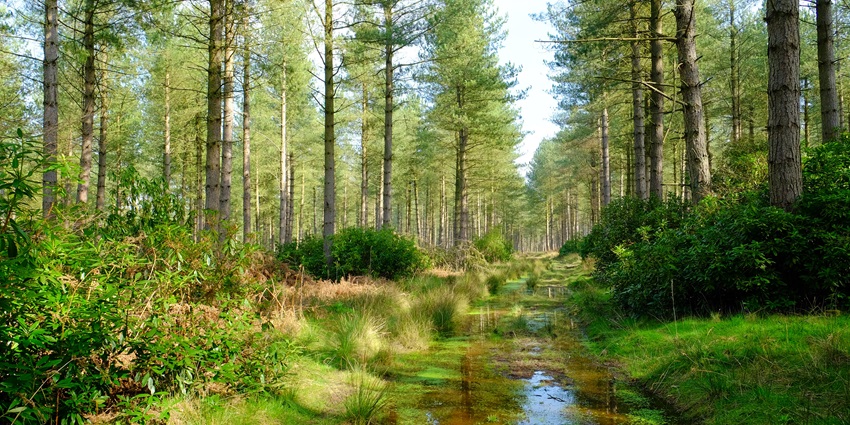
Photo: Scott Wylie / Wikimedia Commons / Image For Representation Only
Located in the northern reaches of Uttar Pradesh in the Maharajganj district, Sohagi Barwa Wildlife Sanctuary is approximately 90 kilometres from Gorakhpur, a major city with good connectivity. The sanctuary stretches along the Indo-Nepal border and lies within the Terai region, characterised by marshlands, grasslands, and dense forests. This area, with its unique geographical position, offers a diverse mix of flora and fauna, influenced by both Himalayan and Gangetic ecosystems. It is one of the tranquil wildlife sanctuaries in Uttar Pradesh.
Suggested Read: National Parks Near Lucknow
How To Reach Sohagi Barwa Wildlife Sanctuary

Photo: Srichakra Pranav / Wikimedia Commons / Image For Representation Only
By Air: The nearest airport is Gorakhpur Airport (GOP), which is well connected to major cities like Delhi and Mumbai. From Gorakhpur, Sohagi Barwa Wildlife Sanctuary is approximately a 2.5-hour drive by road, with taxis and private vehicles readily available.
By Train: The closest railway station is at Nautanwa, about 45 kilometres from the sanctuary. Gorakhpur Junction, a major railway hub, is around 90 kilometres away. From either location, visitors can take a taxi or local transportation to reach the sanctuary.
By Road: Sohagi Barwa Wildlife Sanctuary is well connected by road from major cities in Uttar Pradesh. Private vehicles, taxis, and buses from Gorakhpur, Maharajganj, and Nautanwa provide direct access. The drive offers scenic views, with stretches of forest and rural landscapes that hint at the natural beauty of the sanctuary.
Places To Visit In And Around Sohagi Barwa Wildlife Sanctuary
Here are a few locations in and around Sohagi Barwa wildlife sanctuary maharajganj that visitors might enjoy exploring:
1. Patan Devi Temple
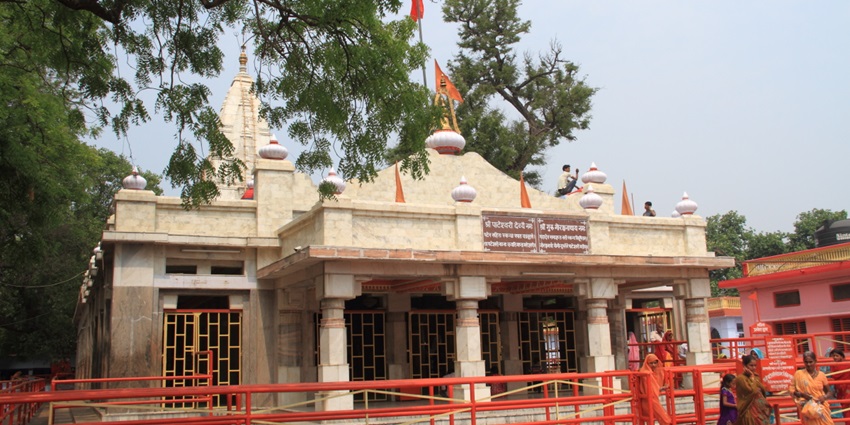
Photo: Ayepee99 / Wikimedia Commons
Patan Devi Temple, nestled within the lush landscapes of Sohagi Barwa Wildlife Sanctuary, is a revered Hindu pilgrimage site dedicated to Goddess Patan Devi. Surrounded by dense forest and tranquil ambience, this temple attracts both pilgrims and nature enthusiasts. The area is popular for its scenic trails that allow visitors to enjoy peaceful walks while observing the flora and fauna. The temple’s historic architecture adds cultural significance, offering a unique blend of spirituality and natural beauty, especially during morning and evening prayers.
Timings: 6 AM – 6 PM
Distance From The Sanctuary: 178 km
Suggested Read: Awesome Places To Visit Near Moradabad For A Creative Retreat
2. Chittauni Wetlands
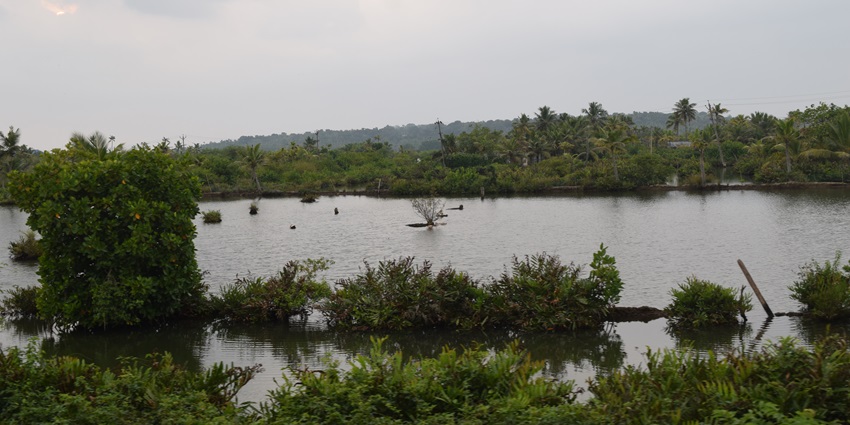
Photo: KannanVM / Wikimedia Commons / Image For Representation Only
The Chittauni Wetlands, located within Sohagi Barwa Wildlife Sanctuary, are a haven for birdwatchers and nature lovers. This area features a variety of wetland flora and attracts numerous bird species, both migratory and native, making it an excellent spot for birdwatching and photography. The wetlands offer a peaceful, scenic environment where visitors can enjoy the sight of herons, egrets, and kingfishers. Seasonal variations add to its charm, making the wetlands a unique and dynamic ecosystem that showcases the sanctuary’s rich biodiversity.
Timings: 6 AM – 6 PM
Distance From The Sanctuary: 47.5 km
3. Jogidhas Fort
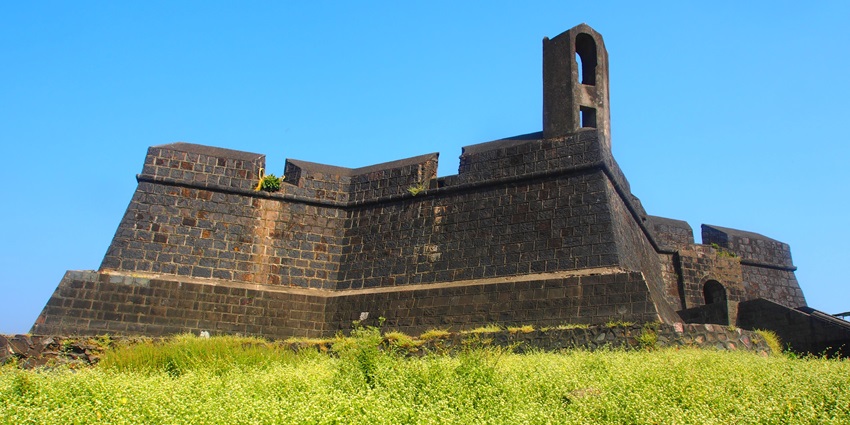
Photo: Pradeep717 / Wikimedia Commons / Image For Representation Only
Jogidhas Fort is an ancient fortification within Sohagi Barwa Wildlife Sanctuary, offering visitors a glimpse into historical architecture amid the sanctuary’s dense forest setting. Known for its scenic vantage points, the fort allows for panoramic views of the surrounding forests and hills. This site is ideal for history enthusiasts and photographers, providing a unique blend of natural and cultural beauty. A short trek through the sanctuary leads to the fort, adding an adventurous element to the visit. It’s a peaceful retreat where history and nature converge harmoniously.
Timings: 6 AM – 6 PM
Distance From The Sanctuary: 70 km
Suggested Read: Places To Visit Near Varanasi For A Scenic Getaway
4. Panchmukhi Mahadev Temple
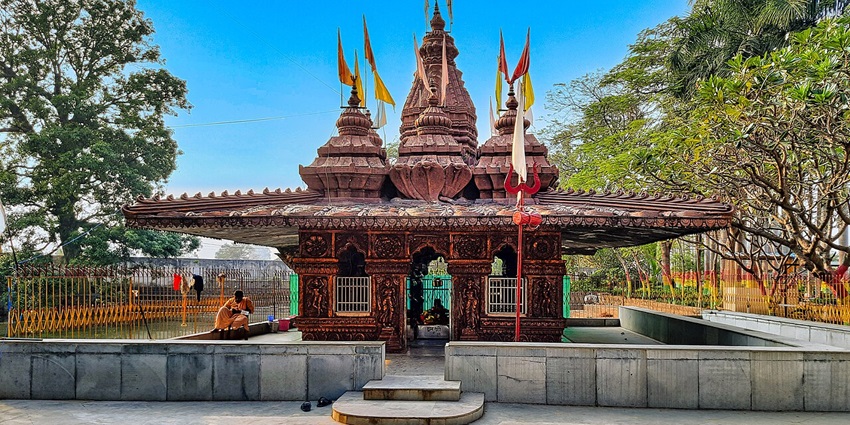
Photo: Ms Sarah Welch / Wikimedia Commons / Image For Representation Only
The Panchmukhi Mahadev Temple, dedicated to Lord Shiva, is located within Sohagi Barwa Wildlife Sanctuary, surrounded by dense foliage and calm surroundings. Known for its spiritual ambience and serene environment, this temple attracts pilgrims and nature lovers alike. The temple features five distinct shrines, symbolising Shiva’s five faces, and provides an atmosphere for meditation and reflection. The peaceful setting and scenic beauty of the surrounding forest make this site a memorable visit for those seeking a tranquil connection with nature and spirituality.
Timings: 6 AM – 6 PM
Distance From The Sanctuary: 10.5 km
5. Sahjanwa Tal
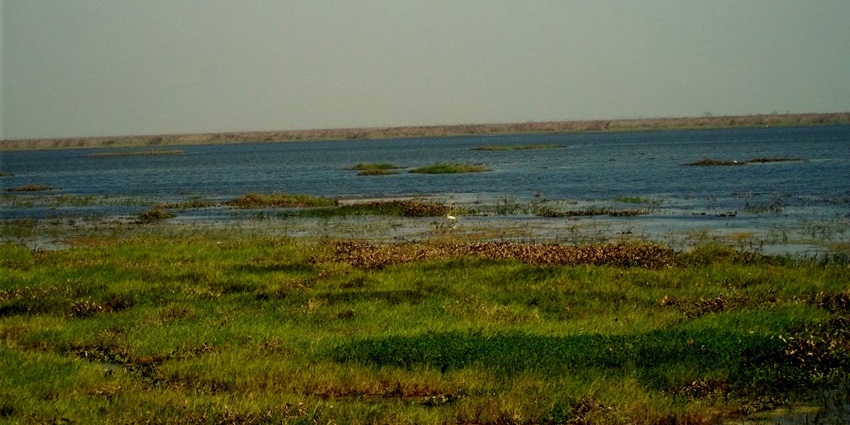
Photo: Pankaj303er / Wikimedia Commons / Image For Representation Only
Sahjanwa Tal is another picturesque lake within Sohagi Barwa Wildlife Sanctuary, drawing visitors for its calm waters and rich birdlife. This lake is especially popular during the winter months when migratory birds visit, providing an excellent opportunity for birdwatching. Surrounded by a thick green belt, Sahjanwa Tal offers visitors a scenic spot for photography, picnics, and nature walks. The peaceful atmosphere and diverse wildlife make it a favourite destination for those looking to relax and appreciate the sanctuary’s natural beauty.
Timings: 6 AM – 6 PM
Distance From The Sanctuary: 77 km
Suggested Read: Places To Visit In Agra
Where To Stay
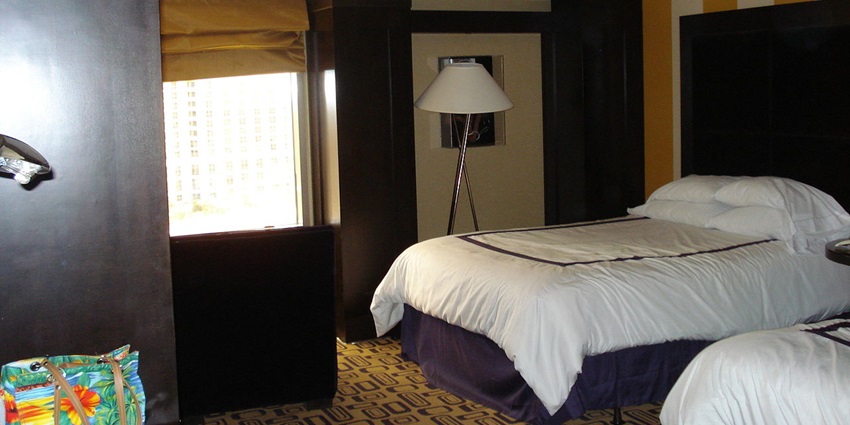
Photo: SchnitzelMannGreek / Wikipedia / Image For Representation Only
Accommodation options near Sohagi Barwa Wildlife Sanctuary range from basic lodges to more comfortable guesthouses. In Maharajganj and Gorakhpur, various hotels and lodges cater to different budgets, providing a comfortable base for exploring the sanctuary. For a more immersive experience, there are also forest rest houses, though availability is limited. It’s recommended to book accommodations in advance, especially during peak visiting seasons.
Where To Eat

Photo: kabir cheema / Unsplash / Image For Representation Only
Dining options near Sohagi Barwa Wildlife Sanctuary are limited, so visitors are encouraged to carry snacks and essentials. For a more authentic experience, small eateries and dhabas in nearby towns serve local cuisine, including traditional Uttar Pradesh dishes like samosas, dal, and kachoris. For a more substantial meal, Gorakhpur offers a variety of restaurants with diverse culinary options, catering to vegetarian and non-vegetarian preferences.
Suggested Read: Places To Visit In Greater Noida
Best Time To Visit Sohagi Barwa Wildlife Sanctuary
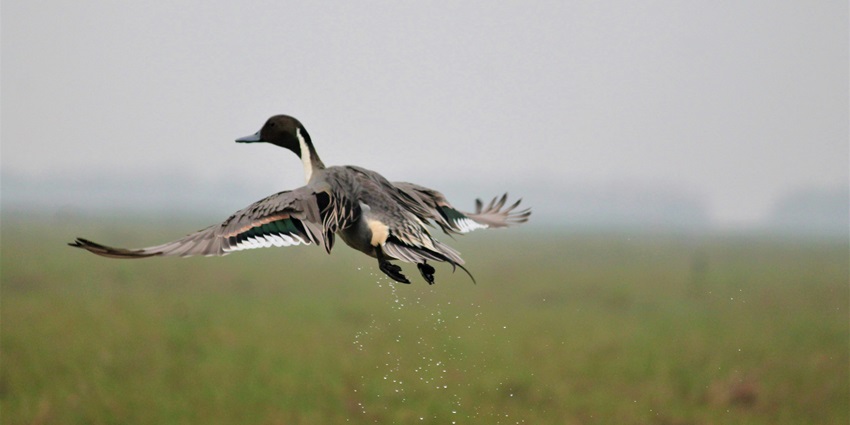
Photo: Kaustav Roy / Unsplash / Image For Representation Only
The ideal time to visit Sohagi Barwa Wildlife Sanctuary is from October to March when the weather is cool and dry, making it comfortable for exploring the sanctuary and spotting wildlife. During these months, temperatures range from 10°C to 25°C, and the vegetation is lush, providing a beautiful backdrop for photography and birdwatching. According to Sohagi Barwa wildlife sanctuary reviews, the monsoon season, from June to September, transforms the sanctuary into a green paradise with seasonal streams and waterfalls but may make travel challenging. Summer (April to June) can be hot, though early morning visits are still pleasant.
Other Factors To Consider
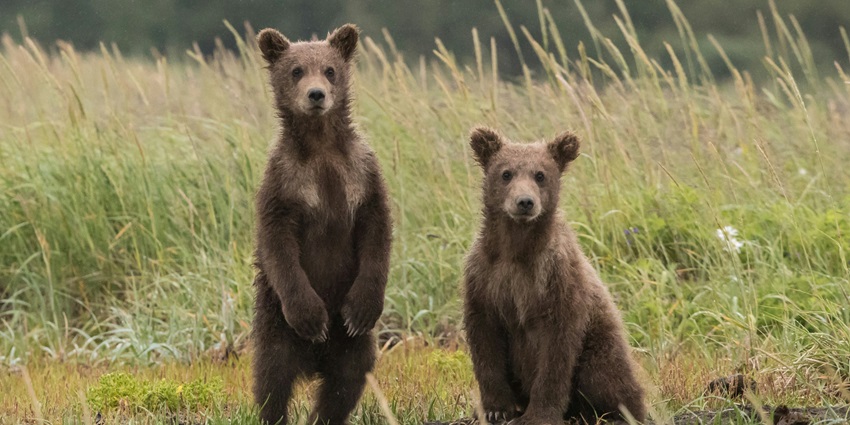
Photo: anthony renovato / Unsplash / Image For Representation Only
Average Trip Cost:
An average trip to Sohagi Barwa Wildlife Sanctuary costs around ₹3,000 to ₹6,000 per person, depending on travel mode, accommodation, and food preferences. For those travelling from nearby cities, fuel and entrance fees should also be considered. Staying in basic lodges and eating at local dhabas can help reduce costs, while more luxurious stays and guided tours may increase the budget.
Tips For Travellers:
- Carry cash, as ATMs may be scarce in remote areas around the sanctuary. Having sufficient money ensures you can enjoy local dining and shopping without worrying about payment options.
- Wear comfortable shoes suitable for trekking and exploring the sanctuary’s diverse trails. Proper footwear will enhance your experience and provide support, making your outdoor adventures more enjoyable and less tiring.
- Pack light woollens for the winter months, as nighttime temperatures can drop significantly in the sanctuary. Dressing in layers allows you to adapt to fluctuating temperatures during your visit.
- Start your day early to maximise exploration of the sanctuary and surrounding attractions. Early mornings often provide the best wildlife viewing opportunities, as animals are most active at this time.
- Respect wildlife by maintaining a safe distance from animals while exploring the sanctuary. Avoid disturbing their natural behaviour to ensure both your safety and the well-being of the creatures you encounter.
- Don’t forget to click lots of Sohagi Barwa wildlife sanctuary photos for your unforgettable memories
Suggested Read: Places To Visit In Jhansi
Sohagi Barwa Wildlife Sanctuary offers a unique blend of adventure, spirituality, and nature. Its scenic landscapes, diverse wildlife, and tranquil environment make it a perfect destination for those looking to escape the hustle and bustle of city life and immerse themselves in the beauty of nature. Whether exploring the forest trails or enjoying the serene surroundings, Sohagi Barwa has something for everyone. Plan your next adventure to Sohagi Barwa Wildlife Sanctuary with TripXL.
Cover Photo: Abhinav Pal / Unsplash / Image For Representation Only


 WhatsApp
WhatsApp
 Twitter
Twitter









